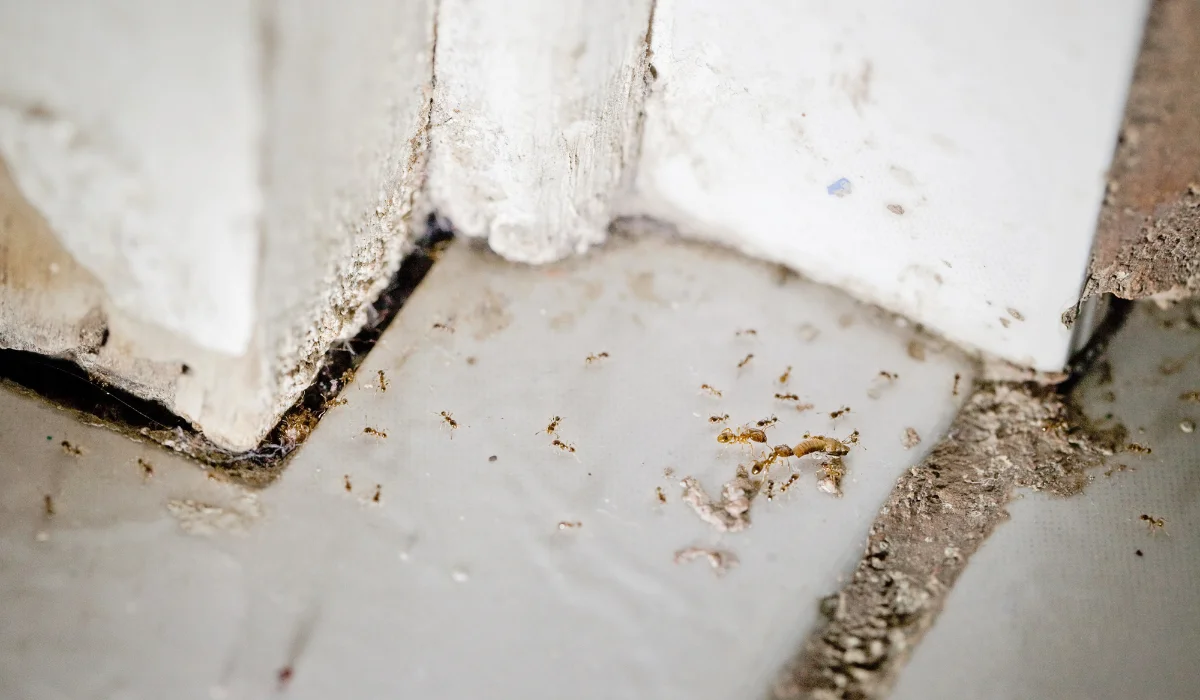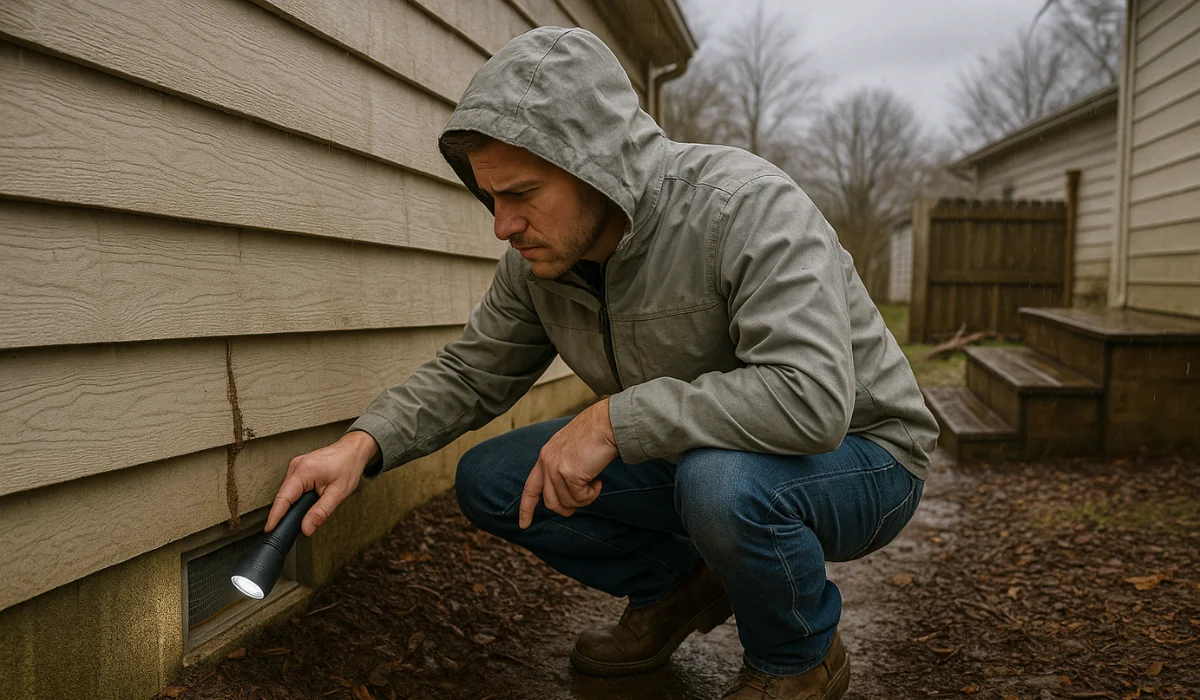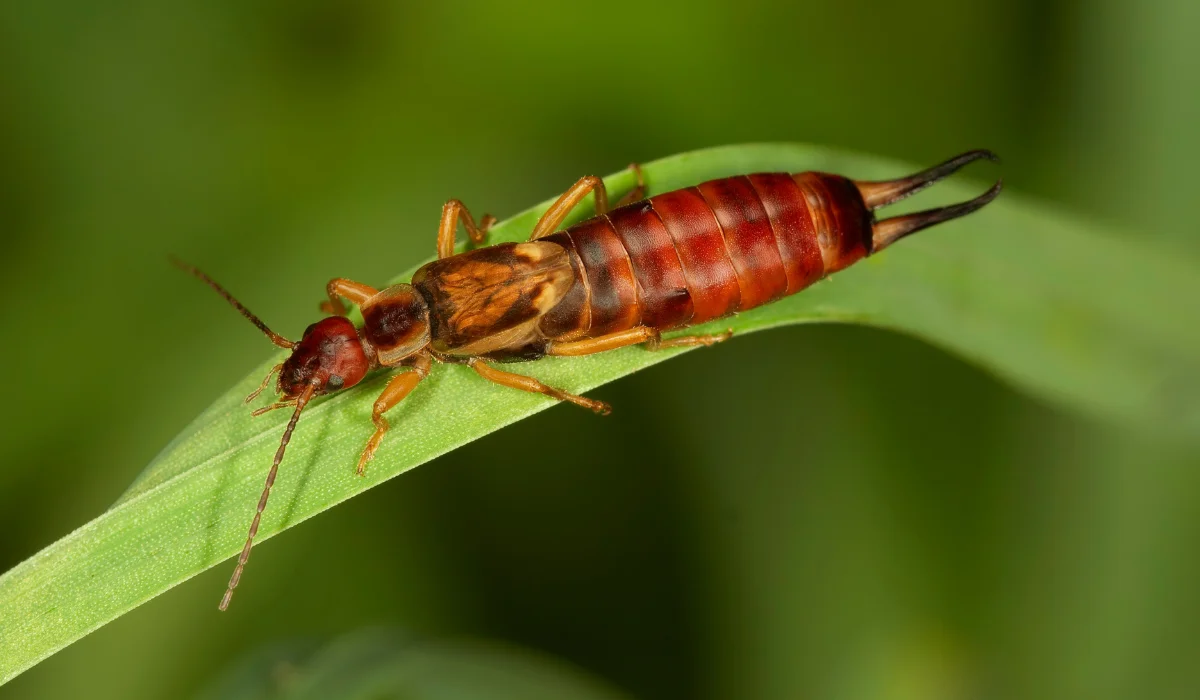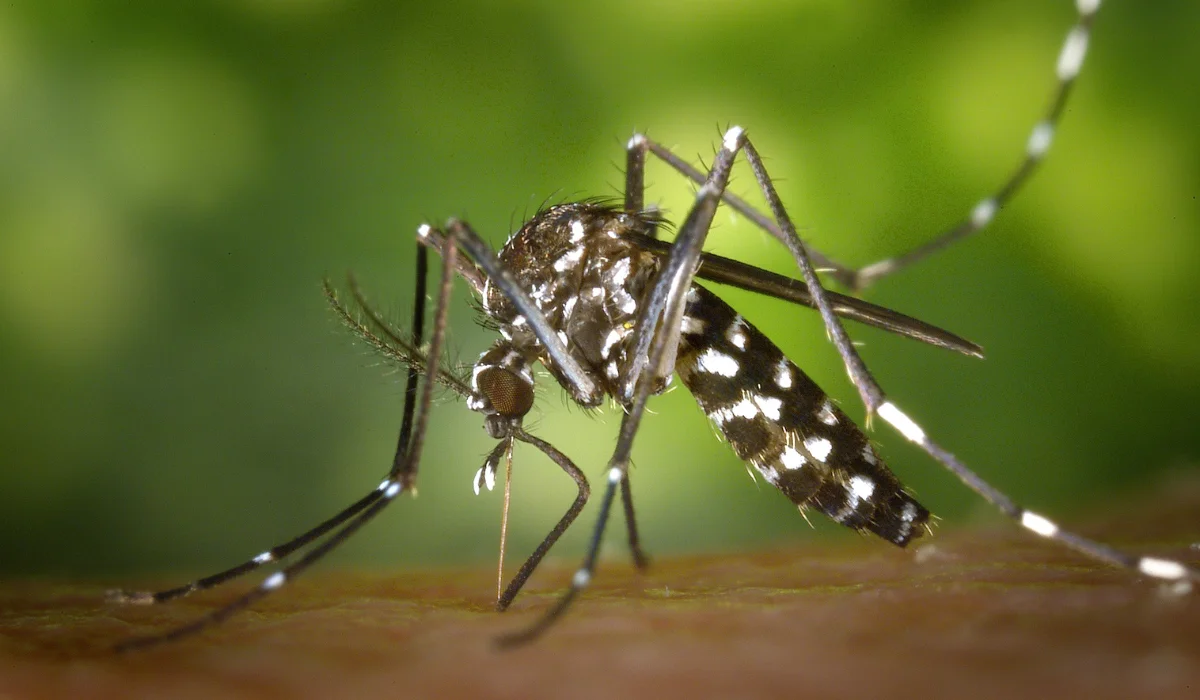Ants on your kitchen counter are a nuisance, but what if they’re coming from inside your walls?
In Louisiana homes, where heat and moisture make conditions ideal for ants, it’s not uncommon for nests to be tucked away behind drywall or baseboards.
These hidden colonies can grow quietly, causing damage and frustration before you even realize they’re there.
Key Takeaways
• Noises, sawdust, or ants in odd places may point to a nest in your walls.
• Carpenter ants, pharaoh ants, and crazy ants are common pests in Louisiana.
• DIY methods might help temporarily, but professionals can identify the root cause.
• Ignoring a hidden nest can lead to repeated infestations or structural issues.
Subtle Signs That Ants May Be Nesting in Your Walls
One of the first signs homeowners notice is a soft, crackling, or rustling sound coming from the walls. You might hear this faint noise at night when everything is quiet. It can be easy to overlook, but it’s often a clue that a colony is active within the structure.
Another common sign is seeing ants in unusual places. If you’re spotting them near ceiling corners, electrical outlets, or along door frames, it’s worth investigating. These ants aren’t just passing through; they’re commuting from a nest nearby.
Sometimes, you’ll find unexpected piles of what looks like sawdust or dirt near baseboards. Carpenter ants, which are larger and often black or dark brown, often chew through decaying wood to create their nests, leaving behind fine shavings. Soft or warped areas in drywall or baseboards can also result from both moisture and ant tunneling.
Ant Species Known to Nest Inside Walls
Different ants behave in various ways, and knowing which type you’re dealing with can help narrow down the source.
Knowing the type of ant you’re dealing with is crucial because different species exhibit distinct behaviors and require targeted treatment approaches.
Pharaoh ants are tiny, light-colored ants that form large colonies and often nest in warm, hidden indoor spaces. Crazy ants, common in parts of Louisiana, are fast-moving and unpredictable. They often nest near electrical equipment and can cause damage over time.
Pavement ants and red imported fire ants are sometimes found indoors, especially if outdoor colonies are disturbed or conditions drive them inside. Each of these species behaves differently, and their thorax shape, size, and trail patterns can help professionals identify them.
Sugar ants and little black ants are smaller and more likely to build nests near food sources. Although they may seem less destructive, their presence on your walls can still lead to ongoing infestations if left untreated.
How Ants Get In
Wall voids, cracks behind baseboards, and small openings around plumbing fixtures are all attractive to ants seeking shelter. High humidity and leaks make your home more appealing to ants. Ants are excellent at exploiting even the tiniest entry points, often going unnoticed until the colony is well established.
Baseboards and crevices near food and water are prime locations for ant colonies to grow. Once inside, ants build trails to and from ant food sources, and even a single scout ant can signal hundreds more to follow. Worker ants searching for food often create distinct ant trails from their nest to kitchens and pantries.
Why You Should Act Quickly
A hidden ant infestation isn’t just an inconvenience; it can lead to real damage. Carpenter ants don’t eat wood, but they excavate it to build their tunnels. Over time, this weakens the structure of your home. Crazy ants have been known to short-circuit electronics, and red imported fire ants can create painful encounters if they enter living spaces.
Beyond the ants themselves, infestations often attract other pests. Ants protect aphids, which secrete honeydew, a sugary substance that ants feed on. This relationship can attract more pests to your property and complicate pest management efforts.
DIY Solutions Can Fall Short
If you suspect ants are nesting in your walls, you might be tempted to reach for ant bait or dusts that claim to repel them. While these options can help reduce visible ant activity, they typically don’t get to the nest itself. Foraging worker ants might take bait back, but without impacting the queen or the colony’s core, the infestation continues.
Diatomaceous earth, for example, can work in visible cracks, but it won’t help if the ants are deep within a wall void. Likewise, peppermint oil and other natural repellents may offer short-term relief, but they don’t solve the root problem.
Professional pest and ant control services provide the necessary tools and techniques to locate the nest and effectively eliminate the problem. An ant problem can escalate quickly if not addressed.
If you’re in Louisiana, especially in areas like Thibodaux, Baton Rouge, or New Orleans, LaJaunie’s Pest Control can help. Please call us, and we will be happy to assist you. Our same-day service and retreat guarantee mean your home can be pest-free without the guesswork.
Preventing Future Nesting
Getting moisture ants out is only half the job. Keeping them out requires attention to food storage, moisture control, and sealing entry points to prevent pests from entering. Store food in sealed containers, fix any plumbing leaks, and seal gaps using weatherproof caulk. Regular maintenance and inspections are key.
To truly protect your home year-round, consider a pest management plan like LaJaunie’s Healthy Home Package. It includes routine inspections and treatments designed to prevent ants and other pests from returning.
FAQs
What are the early signs of a wall nest?
Crackling sounds, sawdust near baseboards, and ants emerging from outlets or behind appliances often signal a hidden nest.
How do I tell if I’m dealing with carpenter ants or termites?
Carpenter ants have elbowed antennae and a segmented thorax, while termites have straight antennae and a more uniform body. Sawdust piles are also more typical of ants than termites.
Can ant nests inside walls be treated without tearing down drywall?
Yes. Pest control professionals use targeted treatments that reach wall voids without damaging your home. This may include bait systems, dusts, and monitoring stations, depending on the ant species.
 By: LaJaunie's Pest Control
By: LaJaunie's Pest Control 



